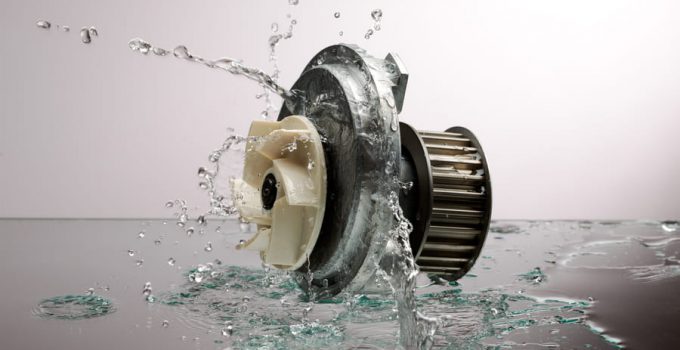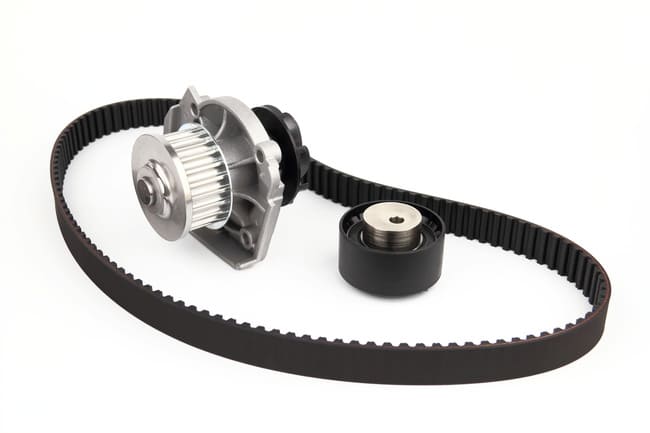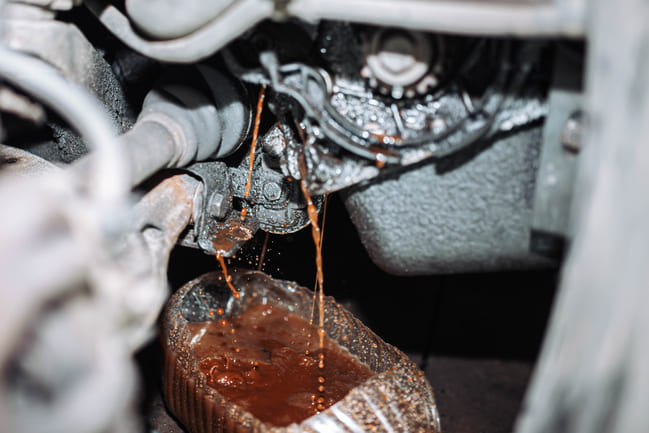
The water pump is a central part of the cooling system of internal combustion engines and for it responsible for dissipating the heat generated during fuel combustion to the outside. This is done using coolant, which is continuously pumped through the engine's cooling circuit with the help of the pump, dissipating the heat to the ambient air via the radiator. In this way, the pump helps protect the engine from overheating. It is therefore very important to identify and replace a defective water pump at an early stage, otherwise there is a risk of engine damage. In this article, we explain what causes a defect, how to recognize it and how to replace a defective coolant pump.
Contents
Function and structure of a water pump

Every internal combustion engine is factory-equipped with a cooling system to protect it from overheating. Air, oil and water cooling are used here, with the latter being by far the most efficient and common. In a water cooling system, the function of the car's water pump is to pump coolant, a mixture of water and antifreeze, through the engine's coolant circuit. The coolant then circulates again and again from the engine, where it absorbs the excess heat, to the radiator, where the heat is released to the outside air, and back to the engine. In this way, the cooling water pump also helps the engine to reach its ideal operating temperature quickly, maintain it constantly and not overheat. The pump can be mounted directly on the engine or mounted separately from it and can be driven either mechanically or electrically. In conventional mechanical vehicle water pumps, the drive is provided by a toothed belt, V-belt or timing chain. As a result, the speed of the impeller inside the pump, with which the cooling water is set in motion, depends on the speed of the engine. The pump is often changed at the same interval as the toothed belt. Due to the strict requirements for reducing exhaust emissions and the trend towards electric and hybrid vehicles, however, electrically driven water pumps are often installed in cars today. These are driven by an electric motor, which means that the flow rate of the cooling water can be adjusted to the cooling requirements of the engine, independently of the engine speed. This allows pollutant emissions and fuel consumption to be optimized.
Causes for a defective water-pump
A car's water pump usually has a service life of around 120,000 to 150,000 km. This can even be extended by using a high-quality coolant. Due to their function, however, these pumps have to withstand strong temperature fluctuations between -40°C and +120°C, pressures of up to 3 bar and changing speeds in the range of 500 to 800 rpm. However, due to these high loads, incorrect belt tension or damage to the belt drive, your car's cooling water pump can break down earlier.
Apart from that, the following causes can lead to a defective pump on your car:
- ! improper installation
- ! wrong coolant or bad coolant quality
- ! Poor maintenance and repair of the cooling system
- !worn parts and connected components
- ! Loss of pressure in the system
- ! insufficient outer sealing
- ! Water pump overload
You can prevent damage to the coolant pump if you flush the car radiator regularly and check the entire cooling and heating system as part of the maintenance intervals. This enables early detection and repair of damage, leaks and excessively worn components.
Symptoms of a defective water-pump
Basically, there are three types of water pump damage is no longer possible due to a defective impeller or impeller inside the pump.
A leaking coolant pump is easily identified by water stains under the vehicle. In a few cases, this can also be determined by the smell of cooling water in the vehicle interior. If you hear rattling, crunching or grinding noises, this can also indicate a defective pump. If the engine overheats and the heater temperature is extremely high or the heater stops working at all, you can assume that the pump is damaged. However, these symptoms not only occur when the water pump in your car is defective, but also when there are other defects, such as defective seals or deflection pulleys. In addition, damage to the pump cannot always be detected in good time, as it often occurs inside the pump and is therefore not visible from the outside. Therefore, the maintenance intervals recommended by the manufacturer should be observed in order to prevent consequential damage such as cylinder head damage, damage to the alternator and turbocharger or, in the worst case, engine damage. The water pump should be changed at intervals of 50,000 and 100,000 km, depending on driving behavior (many long-distance journeys, city traffic, off-road use, etc.). If the coolant pump is driven by a toothed belt, it is advisable to replace these two components together, as changing the toothed belt is very complex and time-consuming and a used toothed belt should not be used again, otherwise it could be overstretched. In addition, it is possible that a new timing belt will even contribute to faster pump wear because it has a higher tension than the old one. It is advisable to have the pump replaced by a specialist or in a specialist workshop, as even small mistakes during removal or installation can lead to engine damage and the replacement procedure differs greatly from engine to engine. An example of this is the ventilation, which takes place partly via a specially designed device, via the conventional add-on parts or automatically via the engine itself. However, if you have the necessary knowledge and experience, you can replace the water pump yourself as described below: Conclusion Unfortunately, a defective water pump cannot always be recognized by the obvious symptoms, as the damage often occurs inside the pump and is not necessarily visible from the outside. In order to prevent major consequential damage from a defective cooling water pump, such as engine damage in the worst case, it is advisable to regularly replace the pump when changing the toothed belt. In addition, the correct cooling water mixture is of crucial importance for a long-lasting pump. Because even in purely tropical areas, a certain amount of antifreeze should be added to the coolant, as this helps to clean and lubricate the cooling system and the cooling water pump, to optimize the boiling point and to prevent oxidation.
Replacing a defective water pump


